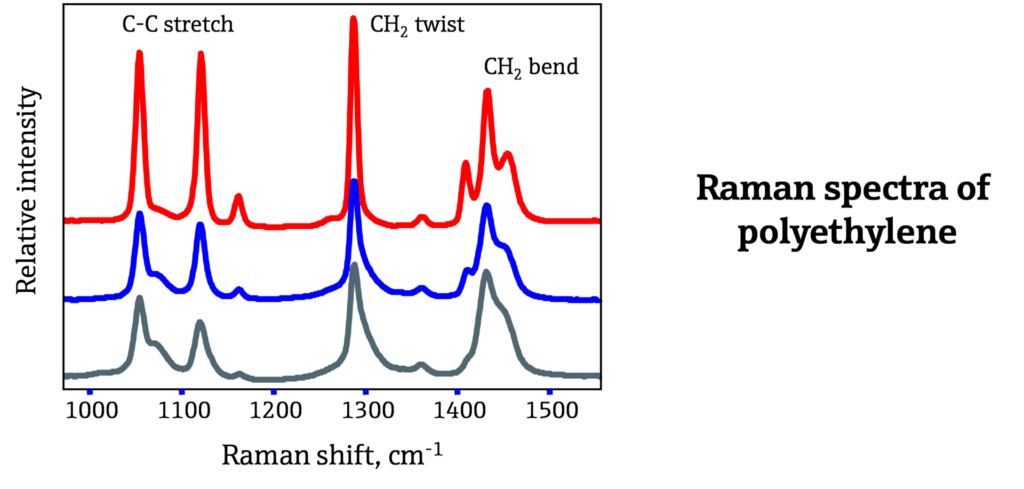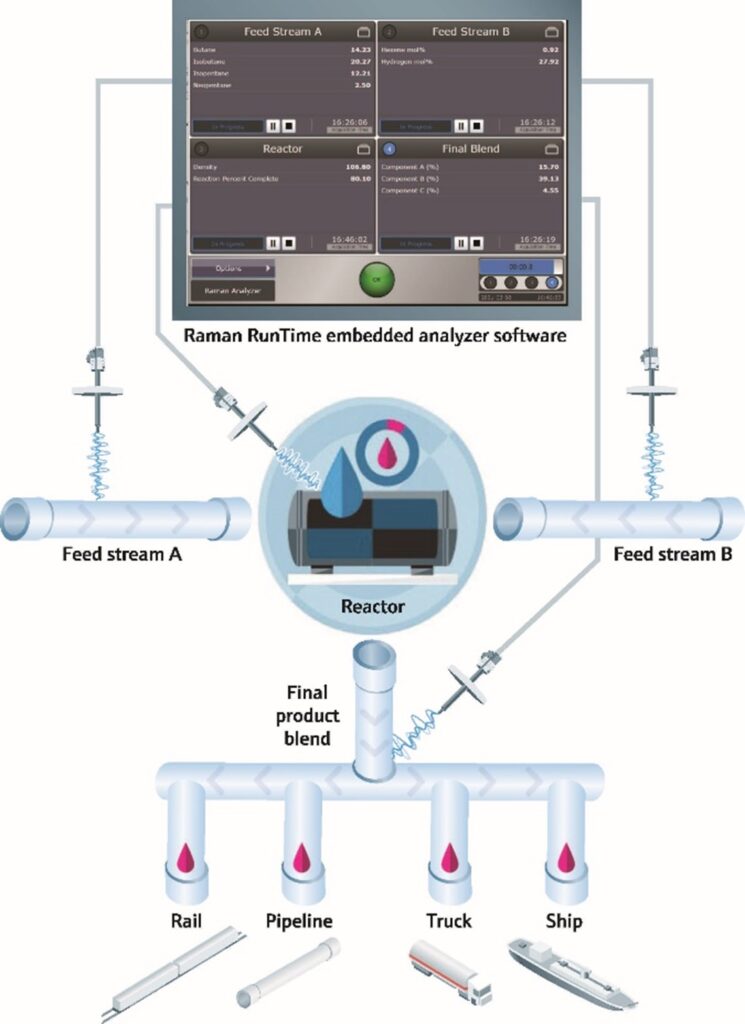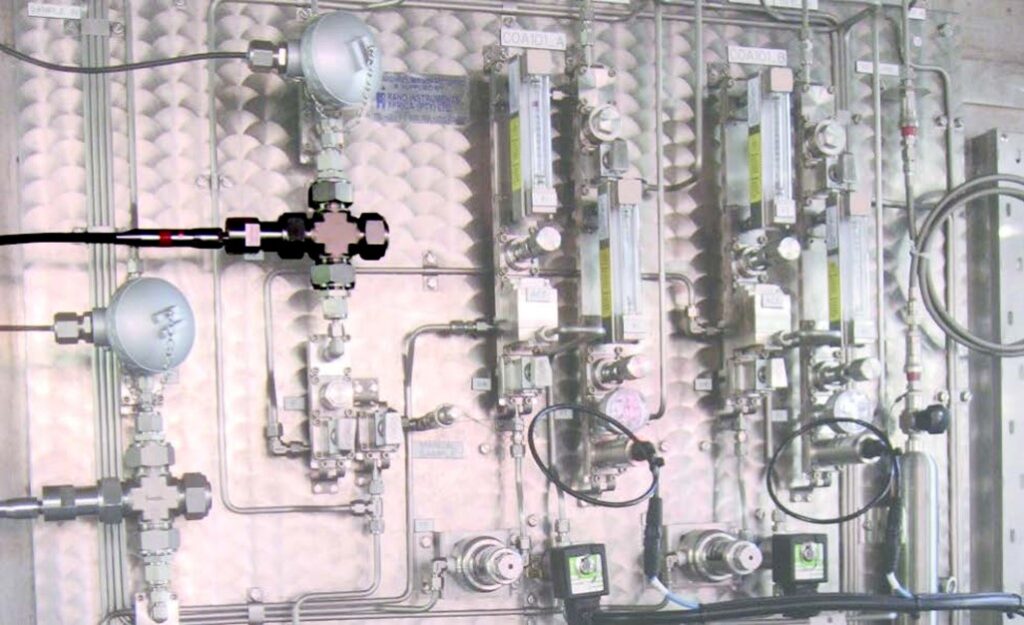Extend SIL proof test intervals with Liquiphant Level Switches and Heartbeat Technology
Across the process industries, and especially in the chemical industry, safety is paramount because process failures and accidents can be […]
Throughout many process industries, and especially in the chemical sector, optical technology advances are elevating the standards of efficiency, safety and accuracy for online process analysis. Enhanced software systems in conjunction with hardware instruments are improving advanced diagnostic and data analytical capabilities. Tunable diode laser absorption spectroscopy (TDLAS) and Raman spectroscopy are examples of powerful optical techniques used in modern process analytical technology (PAT) instrumentation leading this charge.
TDLAS is characterized by a diode laser emitting photons at a wavelength tuned to frequencies absorbed by the analyte. After the beam passes through a sample, a photodetector measures the reduction of beam intensity, which directly correlates to the analyte concentration. TDLAS is the most commonly used laser-based method of measuring concentrations in gases. One of its advantages is that it remains effective even at very low concentrations.
Raman spectroscopy, likewise, uses a laser, the light of which Is focused passes in/onto the sample. Unlike TDLAS, though, the sample does not absorb the photons—instead, it scatters them. This scattering causes the wavelengths of some photons to increase (anti-Stokes Raman) or decrease (Stokes Raman) by amounts specific to the analyte. The characteristics of Raman scattering provide useful information about the analyte, including chemical composition and concentration, polymorphism and intrinsic stress and strain.

Raman technologies business is based on applications that involve monitoring reaction progress (e.g., end-point determination of a polymerization reaction) and measuring the composition, concentration and quality of the end-products (e.g., measuring the chemical and physical properties of the final blended product such as gasoline).
Raman technology is useful for analyzing composition and concentration of feed streams. The diagram shown below illustrates one of our Raman analyzers and its ability to be configured to measure two feed streams. The concentration of components in the reactor and the final product. A Raman signal, however, can be drowned out if the sample contains fluorescent materials. This can sometimes be resolved with a different choice of laser. Additionally, some substances produce very little Raman scattering due to properties of their molecular bonds, rendering other techniques more effective.

Because they operate on different principles, TDLAS absorption-based and Raman scattering techniques are often complementary—molecules that exhibit weak absorption tend to provide strong Raman signals and vice-versa.
TDLAS and Raman analyzers have numerous advantages over their historic predecessors. Compared to gas chromatographs, for instance, many industrial Raman instruments are equipped with multiple probes for insertion into different process streams. A single analyzer can often replace several chromatographs. This can significantly reduce maintenance costs and save on shelter space because each chromatograph requires its own sample conditioning system.

In contrast to traditional offline analysis, modern PAT instruments provide near-real-time feedback, empowering process optimization and faster detection of issues. These instruments are often more consistent and accurate than offline analysis. In some cases, they can reduce the risk of human exposure to hazardous chemicals. Furthermore, automated online analysis systems eliminate the costs of collecting, transporting and analyzing samples in a lab.
New digitalization technologies are making PAT more user-friendly than ever. For example, Endress+Hauser’s Raman Rxn line of analyzers generates diagnostic reports, empowering teams to perform preventive maintenance and identify developing instrumentation issues prior to failure. Asset management systems and process historians can record process data for analysis, leading to improved troubleshooting capabilities and insights for optimal operating conditions. All of this means better products, increased safety and efficiency.
Endress+Hauser offers a full range of PAT instrumentation for all application needs in the chemical industry and beyond. Our experts are ready to partner with you through instrument selection, installation and operation, providing ongoing support to ensure your process requirements are met.
Across the process industries, and especially in the chemical industry, safety is paramount because process failures and accidents can be […]
Discover the top 10 most viewed blogs of 2022 covering challenges and solutions across all industries May 9, 2023 – […]
Improve the working life of your legacy source by increasing the sensitivity of your detector It can be concerning when […]
Comments